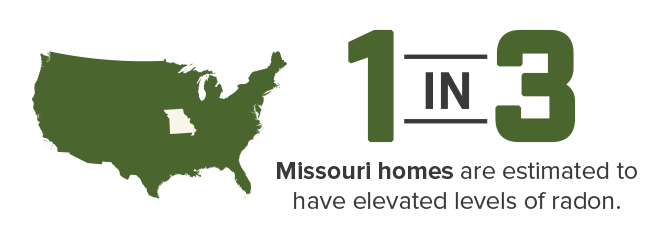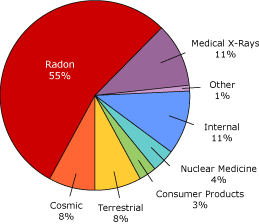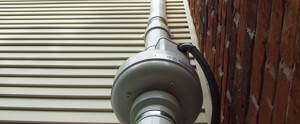What is Radon Gas?
Radon is a colorless and odorless natural radioactive gas that is produced by the breakdown of uranium in the earth's crust.
- Radon is the number one cause of lung cancer in non smokers, second only to the number of lung cancer incidents from cigarette smoking
- If you are a smoker, you are at much greater risk from Radon induced lung cancer
- Radon is a Class A carcinogen
- There are no symptoms of radon exposure
- You can't see, smell or taste radon
- Alpha radiation is released as the Radon Gas decays
- Radon is not known to cause any other health problems or symptoms
- Radon is estimated to cause over 20,000 lung cancer deaths per year
- Approximately 50 US lives are needlessly lost each day, (please test for radon)
- You cannot estimate radon levels based upon the homes age, location, design or test results from a neighbor's home.

1 out of every 3 homes in Missouri is estimated to have elevated radon levels
Radon is formed by the natural radioactive decay of uranium in rock, soil, and water. Naturally existing, low levels of uranium occur widely in Earth's crust. It can be found in all 50 states. Once produced, radon moves through the ground to the air above. Some remains below the surface and dissolves in water that collects and flows under the ground's surface.
Radiation
Radon is considered a low level dose of radiation, where harm may occur over long exposure periods. Radon gas is likely to account for the greatest amount of radiation exposure, (55%), in a typical person's lifetime, followed by CAT scans, (11%).





